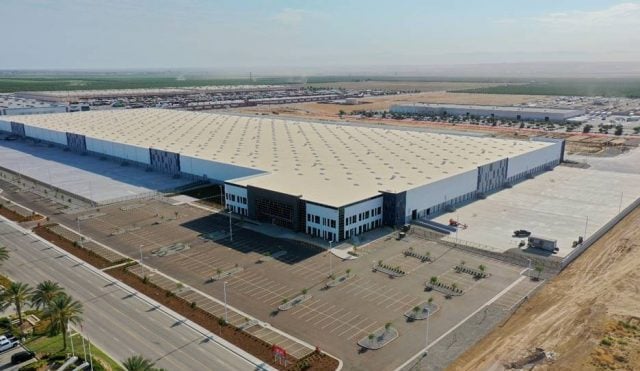[IMGCAP(1)]
ORANGE COUNTY, CA—Commercial developers are using some rather unorthodox methods of marketing their properties to prospective buyers and tenants these days. Some say these methods are similar to some used more typically by residential developers, while others disagree. Whatever the case, it can be argued that times have changed in the commercial realm enough to warrant a significant change in marketing strategy.
For example, take a look the billboard pictured below.
[IMGCAP(2)]
Locally based global branding and marketing firm InterCommunicationsInc. produced this billboard to market elevon, a $100-million creative-office development in El Segundo, CA, with for-sale units. The billboard is running on the 405 freeway through January—an unusual way for a commercial space to be advertised, but it fits with the property, which is designed by custom-home architect Steven Ehrlich Architects.
“It's all come full circle,” Toni Alexander, president and creative director for InterCommunicationsInc., tells GlobeSt.com. “The more things change, the more they stay the same. People forget the techniques used in times past. That's what we're experiencing now. The people who are in this commercial area are stuck on the freeway, so billboard communication is there as an alternative. The big idea is to emphasize the sunlight vs. fluorescents on the billboard, which harkens back to a new generation of customers in terms of office space. These customers have really driven the market in terms of what creative office space is today.”
Alexander adds that just as the spaces have changed, so have the techniques for marketing them. “We have to find better ways of getting the message out there. For commercial developers who were relying on commercial brokers to get the word out, it doesn't happen fast enough.”
New methods are becoming more commonplace as the commercial market gets hot again—especially with creative space—and as some offices adopt residential qualities including indoor/outdoor space, balconies, lofts, kitchens and places for pets. “It's absolutely true that work environments are evolving,” Alex Rose, SVP development for Continental Development Corp., elevon's developer, tells GlobeSt.com. “Firms are putting more people into those environments and packing them into those spaces more than they were five or six years ago. At the same time, there is a spectrum of workspaces and a spectrum of strategies for developing, designing, marketing and using them.”
Rose is careful to emphasize that traditional methods of marketing office space have not disappeared, just as traditional offices haven't disappeared—there are just more alternatives now. “Office space is as diverse as the office users, and there seems to be a tendency right now in the industry to jump to the conclusion that your father's office doesn't exist anymore. That's not the case.”
The newer methods of marketing creative spaces “stress the same things you would see in the Saturday or Sunday real estate section of the newspaper: natural light, balconies, seamless connections between indoors and outdoors, high ceilings, minimal walls, big volumes and maximum flexibility to the owner or user.” Rose says one of the reasons his firm has a twin marketing program—one firm for PR and one for advertising—is to appeal to a broader audience. “These are in fact workspaces created to have a more residential feel. That's why we tapped Steven Erlich for the design work; he has a long track record of creating successful residential properties. At the same time, they have to function as a workspace, so we're conscious of how the user would come in, lay out and operate their business.”
Randy Hall, a principal with marketing firm Idea Hall in Newport Beach, CA, tells GlobeSt.com his firm has branded several creative office developments that meet the work lifestyle of a new generation of office users, including several creative-office buildings by Bixby Land Co. “Millennials will represent 44% of the workforce in seven years, and they want an environment that is aesthetically pleasing, one that supports collaboration, focused task work and recreation. The marketing strategies we are developing for these projects challenge the status quo for leasing material as much as the designs challenge the way we think about office space.
Hall adds that redesigning a building for creative space requires a new brand identity, both to shake off any lingering prejudice toward the old structure and to highlight the dynamic new space that is developed. “We want to eliminate the ideas about the past and focus on the future.”
Rose says the new marketing strategies “simply expand what we in commercial real estate have always known, which is that space has got to be dictated by its use and its user. In certain circumstances, 'build it and they will come' works, but by and large if you're not paying attention to what those trends are in workspace utilization and you're not building and marketing assets with sufficient flexibility to accommodate those trends, you could find bringing certain users into those buildings challenging.”
Alexander points out that every project, no matter what type of real estate project it is, needs to have a story. “Real estate is about people—not about buildings. It's about what people do inside and around those buildings. It's an experience. If you only think of your product as bricks and mortar, you won't be very successful. People who have recognized that creating an environment and being able to tell a story for why it is what it is are typically the most effective. They show people what they're doing that makes it worth spending the money on to buy it or rent it.”
© 2025 ALM Global, LLC, All Rights Reserved. Request academic re-use from www.copyright.com. All other uses, submit a request to [email protected]. For more information visit Asset & Logo Licensing.







